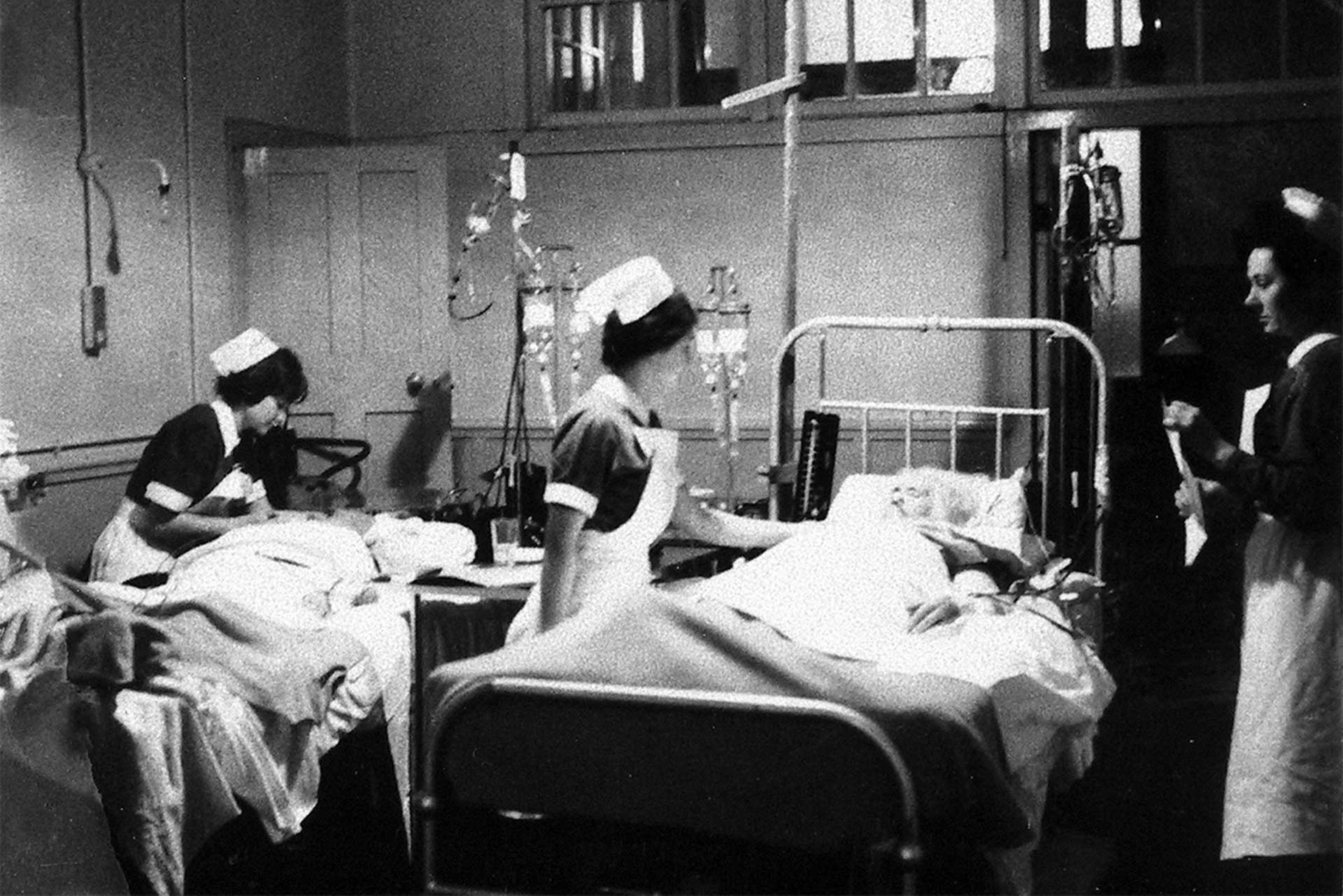
Hello, Friend!
Text for login form
Jasen Bruce
Injectable and Intravenous Microutrient Product Guide
Courtesy of Defy Medical
History of IV Therapy
Modern-day intravenous nutrition is preceded by an interesting history founded in wild experimentation, survival, and necessary supplementation. IV and injectable nutrition therapies remain a popular wellness treatment that both patients and physicians regularly inquire about. Despite sporadic, informal, and superficial clinical data, common IV nutrition protocols continue to evolve as part of a group of wellness-related medical treatments that remain in high demand. In fact, infusing or injecting specific micronutrients or nutritional solutions is not a new therapy. Parenteral nutrition use goes back to the early 20th century, while the basic IV administration of fluids and electrolytes began in the 1800s.
A major step toward a better understanding of parenteral nutrition occurred during the early 20th century, when infusions of glucose, plasma, and emulsified fat into humans became possible.  During the 1930s and 1940s, a clinical surgery professor at Washington University named Dr. Robert Elman observed that amino acids can be intravenously infused when delivered in the form of protein hydrolysates, peptides, and isolated amino acids. Prior to this, our knowledge of amino acid metabolism accumulated over time, but our understanding of the effects of specific amino acids and proteins in humans began to accelerate with Elman’s discoveries, along with the work of many others researching protein metabolism in previous years. In 1948, Elman concluded that the “use of parenteral amino acid mixtures enables the physician to treat disease without protein starvation.”
During the 1930s and 1940s, a clinical surgery professor at Washington University named Dr. Robert Elman observed that amino acids can be intravenously infused when delivered in the form of protein hydrolysates, peptides, and isolated amino acids. Prior to this, our knowledge of amino acid metabolism accumulated over time, but our understanding of the effects of specific amino acids and proteins in humans began to accelerate with Elman’s discoveries, along with the work of many others researching protein metabolism in previous years. In 1948, Elman concluded that the “use of parenteral amino acid mixtures enables the physician to treat disease without protein starvation.”
By the late 1940s, there was product availability of all known vitamins, and advances in technology resulted in stable vitamin solutions for injection and IV administration. The availability of supplemental vitamins and minerals allowed doctors to treat nutrient deficiencies and the diseases that preceded or resulted in the deficiency with supplementation that was now available in multiple dosage forms, including injection.
At this point, the framework was established for the introduction of a complete nutritional therapy consisting of the necessary vitamins, minerals, proteins, fats, and glucose. Accumulated discoveries spanning across decades finally started to deliver nutritional products as newly found methods allowed us to isolate specific micronutrients, then synthesize them into pharmaceutical products that included sterile solutions meant for intravenous infusion.

The concept of taking in food intravenously began to evolve between the 1950s and 1960s. Until that time, IV nutrition was limited to specific vitamins, minerals, glucose, and fluids, but there was still nothing available that could replace food entirely in patients who were unable or prohibited from eating food or drinking fluid by mouth. During the 1950s, physicians were aware of the negative effects of starvation or malnourishment on patient mortality and recovery. However, there was still not enough understanding of the correlation between adequate nutritional support in patients and positive clinical outcomes. Feeding patients who were unable to eat remained a major problem to solve. During this time, it was thought that it was impossible to intravenously administer a complete nutrition formula containing all nutritional necessities in the form of macronutrients and micronutrients
The status of IV nutrition support changed in the 1960s following the development of an effective total nutrition solution that could be administered intravenously.  The first investigation was completed on beagle puppies by Stanley Dudrick and Douglas Wilmore, surgeon researchers at the University of Pennsylvania. They continued testing IV nutrition on adult patients malnourished from a variety of surgical complications and gastrointestinal conditions. After that, a human infant was successfully fed intravenously, which then resulted in widespread clinical application of total parenteral nutrition (TPN).
The first investigation was completed on beagle puppies by Stanley Dudrick and Douglas Wilmore, surgeon researchers at the University of Pennsylvania. They continued testing IV nutrition on adult patients malnourished from a variety of surgical complications and gastrointestinal conditions. After that, a human infant was successfully fed intravenously, which then resulted in widespread clinical application of total parenteral nutrition (TPN).
TPN has been available for 50 years; however, history in this field goes back more than 350 years, with the first milestone being the discovery of general blood circulation by William Harvey in 1628. His description became the anatomical basis for intravenous infusion. Many investigations were performed during the following centuries, showing that solutions containing electrolytes and glucose could be given intravenously in humans. There were a variety of attempts at using intravenous therapies to treat different conditions. Unfortunately, many patients ended up being guinea pigs in experiments that led to illness or death.
The period of experimentation following William Harvey’s discovery resulted in a variety of dangerous ingredients people attempted to administer intravenously, including the blood from different animals to increase their vitality or libido, or to heal disease. This was prior to understanding the importance of sterility, blood typing, and other important considerations. Many of these therapies were based on limited scientific knowledge and strongly held religious beliefs common in that time. For example, there are recorded stories of people who attempted IV infusion of lamb’s blood to promote longevity, reportedly based on the biblical references comparing Jesus to a lamb. Unfortunately, and absent of retrospective surprise, many patients died during or after treatment. However, these experiments paved the way for what we know today about this route of administering food and drugs.
Another important milestone occurred after a cholera outbreak in England in 1831. Many people subsequently died because there was no available treatment as the disease started to spread. Around that time, a young physician from Ireland named William O’Shaughnessy pursued an interest in studying cholera as he witnessed so many people dying from the disease. He traveled to Europe and, using his knowledge of chemistry, examined the blood and stool of his cholera patients. He made crude measurements of the electrolytes in both specimens and determined that the patients were severely dehydrated. To treat the dehydration, Dr. O’Shaughnessy developed a hypotonic IV solution that resulted in improved survival for the patients who received it. That might be the first recorded clinical implementation of IV nutrition.
Today, 80% of hospitalized patients receive IV therapy. A large percentage of medications are now administered by IV. IV therapy is becoming more widely used in extended care facilities and home care solutions. The IV formulations used in popular IV clinics are prescribed for nutritional supplementation, not for TPN survival. Nutritional supplementation is used to treat a specific condition or to provide an outcome. TPN solutions are designed to provide all the nourishment needed for survival and are given to patients who cannot eat on their own. TPN is not possible without first understanding the effects of micronutrients and being able to produce them as stable solutions for injection.
The IV formulations used in popular IV clinics are prescribed for nutritional supplementation, not for TPN survival. Nutritional supplementation is used to treat a specific condition or to provide an outcome. TPN solutions are designed to provide all the nourishment needed for survival and are given to patients who cannot eat on their own. TPN is not possible without first understanding the effects of micronutrients and being able to produce them as stable solutions for injection.
Popular modern-day IV nutrition therapy may have started with a Johns Hopkins internal medicine doctor named John Myers. He was a practicing medical doctor during the 1940s–1970s. Prior to becoming a physician, Myers was an electrical engineer. He had developed what is called the Primary Frequency Standard, which was installed in Nebraska for the U.S. government to assign, monitor, measure, and adjust the broadcast frequencies of radio transmission stations in the U.S. He decided to change paths, leaving engineering to become a physician in 1935. His training as an engineer provided foundational interest in the interrelationships of the biochemistry that fuels cellular function and the application of nutritional elements to improve metabolic function. Dr. Myers recognized that we have substances including minerals (elements) in our body and that careful manipulation of this chemistry can sometimes influence positive outcomes. He did this through experimenting with micronutritional supplementation and was particularly fascinated with elements and vitamins.
His position at Johns Hopkins allowed him to treat chronically ill patients who needed ongoing management or those with an unknown diagnosis. Part of his integrative treatment plans included IV infusion of elements and vitamins in different combinations. He would often see patients whom no one else could diagnose, such as those suffering from chronic conditions, including fatigue, depression, cough, and allergies, that were unresponsive to treatment. These patients were given different IV formulas while Dr. Myers observed and recorded the outcomes.
He was one of the first doctors to record the benefits and the positive outcomes when administering these nutrient infusions. He recorded these outcomes and reported the improvement the patients experienced when given a high-dose fluid containing minerals and vitamins.
Dr. Myers’ findings were lost to time and did not reemerge until the early 2000s, when a physician named Dr. Alan Gaby published a book called Nutritional Medicine. There was a chapter dedicated to the Myers’ cocktail with mention of John Myers’ research and protocols. This publication resulted in the Myers’ cocktail’s popularity that has spread across the U.S. Dr. Myers’ exact formula is unknown, possibly since he changed it depending on the patient’s condition, but Dr. Gaby was able to identify the common foundational ingredients used in the original Myers’ cocktail. The ingredients include calcium, magnesium, ascorbic acid (vitamin C), B complex, B6, and trace minerals at various levels, depending on the patient.
Almost all modern IV infusion clinics offer a modified version of the Myers’ cocktail. Many of the ingredients used in IV nutrition formulas today can only be obtained from an outsourcing facility that specializes in sterile solutions.
Modern IV nutrition continues to increase in popularity and demand today. Since there is not yet enough financial incentive for big research around the effects of these therapies, hopefully the continued development and feedback of IV nutrition protocols among practicing physicians will contribute to our understanding of the effects nutritional supplementation can have on clinical outcomes and quality of life in patients.
Get Free Book
Books can only be shipped within the United States. By filling out this form, healthcare providers are agreeing to allow Defy Medical to share the form information with their preferred vendor for injectable and IV nutrition products. The vendor may contact the healthcare provider. By filling out this form, patients are agreeing to be contacted by Defy Medical.